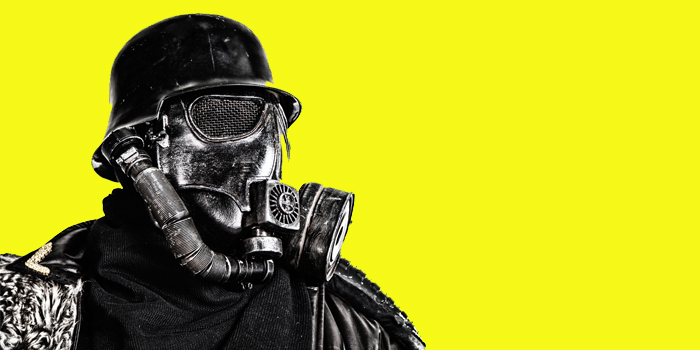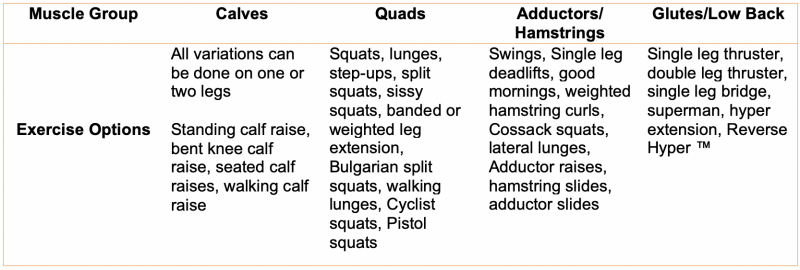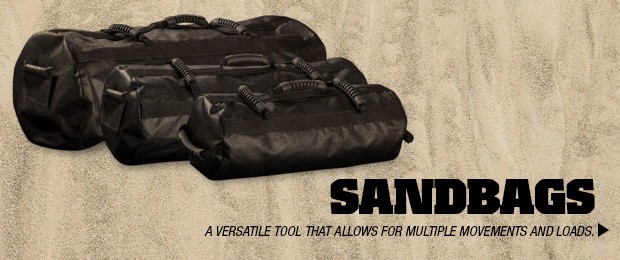
As we have discussed in many articles, videos, and podcasts, one of the primary adaptations to resistance training is the growth of muscle mass. Referred to as hypertrophy, increases in cross-sectional area or getting jacked, tanned, and juicy as fuck. When you get to be a better, stronger lifter then building new mass is one of the primary ways you are going to gain strength (it isn’t the only way, but it is an important factor). As such, maintaining as much muscle mass as you can over the coming period of time should be right up there on your priority list. To be honest, it should probably be higher on your priority list than force production based adaptations as these have a shorter time frame (you adapt to the training and gain them faster).
Part 1: Goal Setting and Adjusting Your Nutritional Plan During the Apocalypse
Part 2: How to Adapt Your Training and Plyometrics During the Apocalypse
Part 3: Remaining Jacked and Tanned During the Apocalypse
Part 4: Setting Up Your Training Plan During the Apocalypse
What Do You Know About Hypertrophy Training?
- Intensity doesn’t seem to be too important to hypertrophy outcomes.
- A frequency of twice per week is superior to once per week per muscle group. There isn’t enough evidence to support three times per week being better than twice per week.
- More volume, all things being equal, leads to greater hypertrophy response, however, this is a graded response and eventually, you will come across diminishing returns. There are some studies that dispute these trends. It is safe to assume that higher volumes within reason are a good idea.
- There is little to no evidence to support tempo training being superior to normal contractions. 0.5s - 8s contractions appear to be effective for hypertrophy training. 10s contractions and greater are inferior and shouldn’t be performed.
- Both eccentric and concentric muscle action are effective for hypertrophy training. A mix of both and perhaps no focus on either would be a better approach.
What Does This Mean for Training with Little to No Equipment?
The first thing to note is the good news about training without barbells, dumbbells, and weights. It might not be as fun, but it is 100% worth your time. So just because you can’t do what you want doesn’t mean you shouldn’t do anything far from it! If you can maintain the size you have developed or put on some size, when you go back to training how you want, you should notice the easier transition into training for performance.
We should be looking to utilize the following for training to maintain or better yet gain size during periods when we can’t train the way we want to:
- You should be training each body part twice per week, maybe three if you feel it is more helpful.
- We should be looking to include a variety of work for each muscle where possible, and we should be looking to perform 2-5 working sets of each exercise.
- The number of reps aren’t really important. What is important is the level of muscular effort. So we should be training to a minimum of RPE 9 per set, RPE 10, or concentric failure.
- Don’t sweat it. There isn’t really much point in getting specific or targeted with shit like tempo or isometrics. It isn’t important. The adaptation we are trying to get is general anyway.
- General protocols like 3x10 or 30 sec on/30 sec off are better than nothing, but we can do better. We should be training just as hard if not harder than we normally do, only utilizing different implements and working on our general condition.
- We shouldn’t only be focusing on muscle size. We should be looking at other outcomes, which is something we are developing and something we will be advocating.
Looking at either a total body split 3-4x per week or an upper/lower split is going to give us the frequency and trade-off between stress and recovery where we are going to be able to maximize our training week. You could look at doing a bodybuilding split like push, pull, legs, off, repeat, as well as it ticks out main boxes (2x per week frequency with the right volume and protocols to provide the stimulus we need to obtain the adaptation we want).
Whatever Equipment We Can Get
- Bands
- Dumbbells
- Kettlebells
- Backpacks filled with water bottles or books
- Press up handles
- Chairs
- Desks
- Pull-up bars
- Parallels
- Occlusion bands
- Barbells
- Weights
- Sacks of concrete or sandbags
- Buckets of water or tins of paint
- Dogs, Human partners
- The fucking kitchen sink
- Anything you can use to increase the external resistance or to put more work on the muscle the better.
Make Use of Protocols That Can Help to Increase the Intensity of the Exercise Without Increasing the External Resistance
- Occlusion training
- Pre-fatiguing the muscle
- Supersets
- Giant sets
- Circuits
- Exercise density (as much work as you can do in a condensed period of time)
- Isolation training
What About Occlusion Training?
If you haven’t read about or heard about occlusion or blood flow restriction training, then the following should serve as a quick primer.
Blood flow restriction training (also abbreviated BFR training[1]) or occlusion training is an exercise approach whereby resistance exercise or aerobic exercise is performed whilst an occlusion cuff is applied to the proximal aspect of the muscle[2]. In this novel training method, limb blood flow is restricted via a cuff throughout the contraction cycle and rest period. This results in partial restriction of arterial inflow to muscle, but, most significantly restricts venous outflow from the muscle[3]. Given the light-load nature and strengthening capacity of BFR training, it can provide an effective clinical rehabilitation stimulus without the high levels of joint stress and cardiovascular risk associated with heavy-load training [4] - Wikipedia 2020
Occlusion training is on paper, perfect for the situation we are in. The protocol calls for low load training (10-30% of rep max) for high reps and limited rest periods. Most of the research on blood flow restriction or occlusion training is for its use during rehabilitation training; however, it was initially invented by a Japanese bodybuilder. There are also studies showing it to have a significant effect on healthy and well-trained populations such as this 2014 study done with collegiate athletes using knee wraps to occlude the squat.
Blood flow restriction is a novel training methodology and not something we will be using to form the cornerstone of this approach; however, it is useful and straightforward to implement if you have the correct equipment. We will advocate you to utilize it once to twice per week as a novel way of increasing the exercise intensity given the limited scope for increasing external resistance. Meta-analysis has shown lower frequency BFR (2-3x per week) training to be more effective than higher frequency(4-5x per week).
The protocol we will be using for occlusion or BFR is the following:
- 30 reps
- 30 seconds rest
- 15 reps
- 30 seconds rest
- 15 reps
- 30 seconds rest
- 15 reps
This is one of the many protocols you can use. The main thing you should be looking to do is to do low load, high reps, with insufficient rest. We are looking to induce local fatigue in the muscle we are trying to work.
Exercise Selection
Before we put a program together, we should be putting together the exercise selection available to us so we then can put it into our structure. The following is in no way an extensive list, but it should provide you with some ideas.
Lower Body

Upper Body

We should be looking to hit about two exercises per session for each muscle group and hit it with two-five sets. That way we will be getting 8-20 total sets a week of work that is working the muscle hard (which should put us in a good place for either maintaining or building muscle mass). A lot of exercises will have cross-talk as well. When we do a Bulgarian split squat for example, not only will the quad be working, but the glute and hamstrings will be co-contracting and contributing to the movement.
Lower/Upper Split
Session 1 - Lower
Circuit 1
A - Quad focus - 1 set to RPE 9
B - Adductor / Hamstring focus - 1 set to RPE 9
C - Glute / Low back focus - 1 set to RPE 9
D - Calf Focus - 1 set to RPE 9
3 - 5 min rest
3 rounds
Circuit 2
Pre fatigue or Occlusion training
A - Quad focus - 1 set to RPE 9 - 10
B - Adductor / Hamstring focus - 1 set to RPE 9 - 10
C - Glute / Low back focus - 1 set to RPE 9 - 10
3-5 minutes rest
2 - rounds
Session 2 - Upper
Circuit 1
A - Chest focus - 1 set to RPE 9
B - Upper back focus - 1 set to RPE 9
C - Shoulder focus - 1 set to RPE 9
D - Arm Focus - 1 set to RPE 9
3 - 5 min rest
3 rounds
Circuit 2
Pre fatigue or Occlusion training
A - Chest focus - 1 set to RPE 9 - 10
B - Upper back focus - 1 set to RPE 9 - 10
C - Shoulder focus - 1 set to RPE 9 - 10
D - Arm focus - 1 set to RPE 9 - 10
3-5 minutes rest
2 - rounds
Session 3 - Lower
Circuit 1
A - Adductor / Hamstring focus - 1 set to RPE 9
B - Glute / Low back focus - 1 set to RPE 9
C - Quad - 1 set to RPE 9
D - Calf Focus - 1 set to RPE 9
3 - 5 min rest
3 rounds
Circuit 2
Pre fatigue or Occlusion training
A - Adductor / Hamstring focus - 1 set to RPE 9 - 10
B - Glute / Low back focus - 1 set to RPE 9 - 10
C - Quad focus - 1 set to RPE 9 - 10
3-5 minutes rest
2 - rounds
Session 4 - Upper
Circuit 1
A - Upperback focus - 1 set to RPE 9
B - Shoulder focus - 1 set to RPE 9
C - Chest focus - 1 set to RPE 9
D - Arm Focus - 1 set to RPE 9
3 - 5 min rest
3 rounds
Circuit 2
Pre fatigue or Occlusion training
A - Chest focus - 1 set to RPE 9 - 10
B - Upper back focus - 1 set to RPE 9 - 10
C - Shoulder focus - 1 set to RPE 9 - 10
D - Arm focus - 1 set to RPE 9 - 10
3-5 minutes rest
2 - rounds
This gives us a good framework we can use to piece together a program regardless of the equipment you have available. In the next installment, we will discuss how you can use this time to become more robust and to focus on some general conditioning to prepare yourself for the more voluminous and intense barbell training to come when you get back to full training.
Header image courtesy of zabelin © 123rf.com
Marc Keys is a strength and conditioning coach and business owner. Marc's current full-time job is running Cast Iron Strength—a strength and conditioning online service and training facility in Edinburgh Scotland where he delivers strength and conditioning coaching both in-person and online to over 100 powerlifters, strongman athletes, weightlifters, and athletes from many other sports. Before opening his facility and moving to Cast Iron Strength full-time, Marc worked in professional rugby from 2013 - 2017 with Scotland and Edinburgh rugby. Prior to working in professional sport, Marc worked for the Scotland Institute of Sport where he was involved in the physical preparation of around 60 Olympic and commonwealth athletes from over 20 different sports, many of whom went to medal for Team Scotland or Great Britain. As a powerlifter, Marc has been lifting in the IPF for twelve years. He has competition best raw lifts of 645-pound squat, 465-pound bench press, and 675-pound deadlift at a bodyweight of 248 pounds. Marc also holds a master's degree in strength and conditioning and a bachelor's degree in sports science. If you would like to contact Marc, email speedpowerperformance@










